Key takeaways:
- Effective communication is essential for a cohesive film crew, fostering creativity and collaboration while minimizing misunderstandings.
- Utilizing tools such as Slack and Trello and holding regular check-ins enhances organization and maintains team morale.
- Creating a supportive environment for open dialogue allows crew members to feel valued and encourages the sharing of ideas, improving overall workflow.
- Addressing issues and mistakes openly promotes accountability and strengthens team resilience, ultimately leading to a more productive atmosphere.
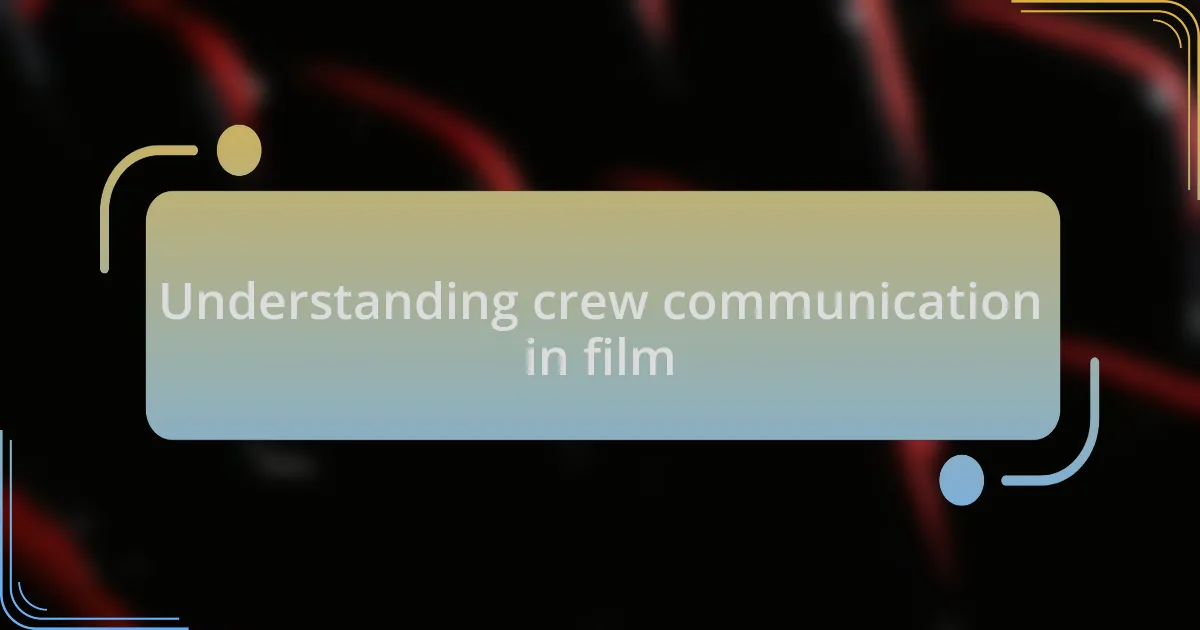
Understanding crew communication in film
Effective communication is the backbone of any successful film crew, ensuring everyone is on the same page. I remember a time when we were shooting a scene with tight time constraints, and clear, concise communication helped us navigate through the chaos. It made me realize just how vital it is to maintain open lines of discussion, especially when creative ideas need to flow seamlessly.
Have you ever noticed how miscommunication can derail even the most perfectly planned shoots? I once witnessed a crew member misunderstand a simple directive, which resulted in a costly reshoot. That experience taught me the importance of clarity and the need for a supportive environment where team members feel comfortable asking questions.
Listening is just as crucial as speaking in crew communication. On another shoot, I made a point to actively solicit input from every department, and the burst of creativity that emerged was astounding. It reminded me that every voice matters and that fostering an inclusive dialogue can lead to innovative solutions and a more cohesive team dynamic.
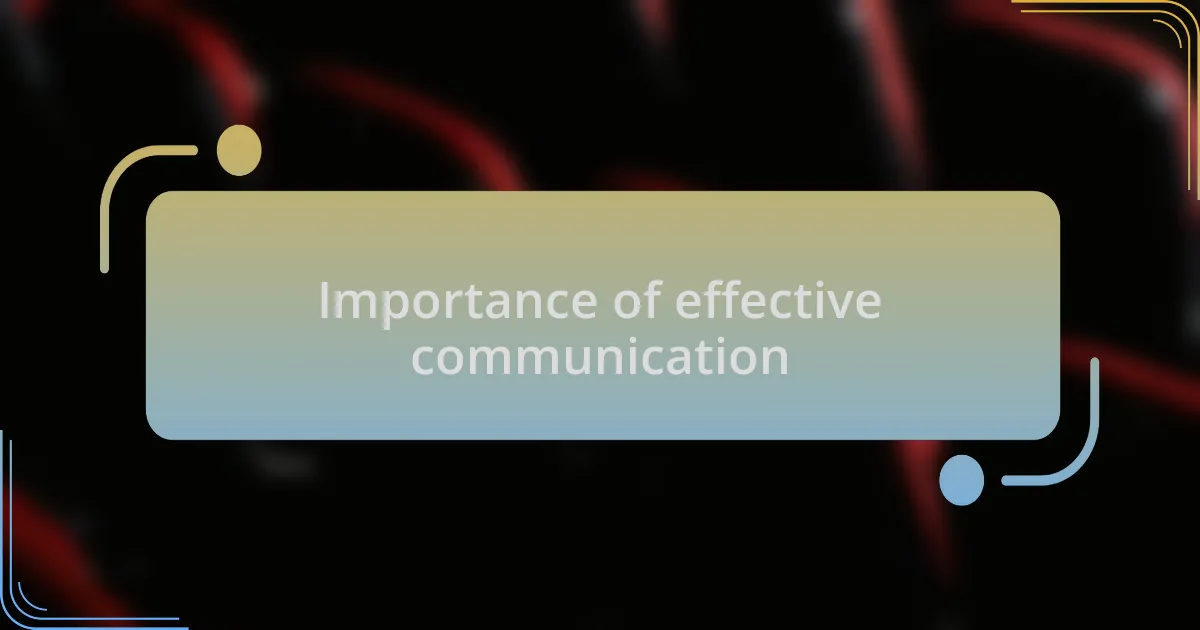
Importance of effective communication
Clear communication isn’t just a necessity; it’s a game-changer on set. I recall a particular day when we had to adjust our shooting schedule unexpectedly. With everyone pulling in different directions, I quickly gathered the team for an open discussion. The relief in their faces when they understood the changes was palpable, showcasing how clarity transforms uncertainty into a collective resolve.
Effective communication also nurtures trust among crew members. I remember when a new cinematographer joined the team. By taking time to share our creative vision and encouraging open feedback, we built a rapport that turned initial nerves into collaboration. This reinforced my belief that when people feel heard, they are more likely to contribute authentically, making the entire production more cohesive and enjoyable.
At times, it’s easy to underestimate the power of a simple check-in. During one long shoot, I made it a habit to pause and ask everyone how they were feeling about the film’s direction. The responses were enlightening—some had ideas that totally reshaped our approach! This reminded me that frequent communication not only keeps the project on track but also builds a supportive community within the crew, ultimately leading to a richer creative experience.
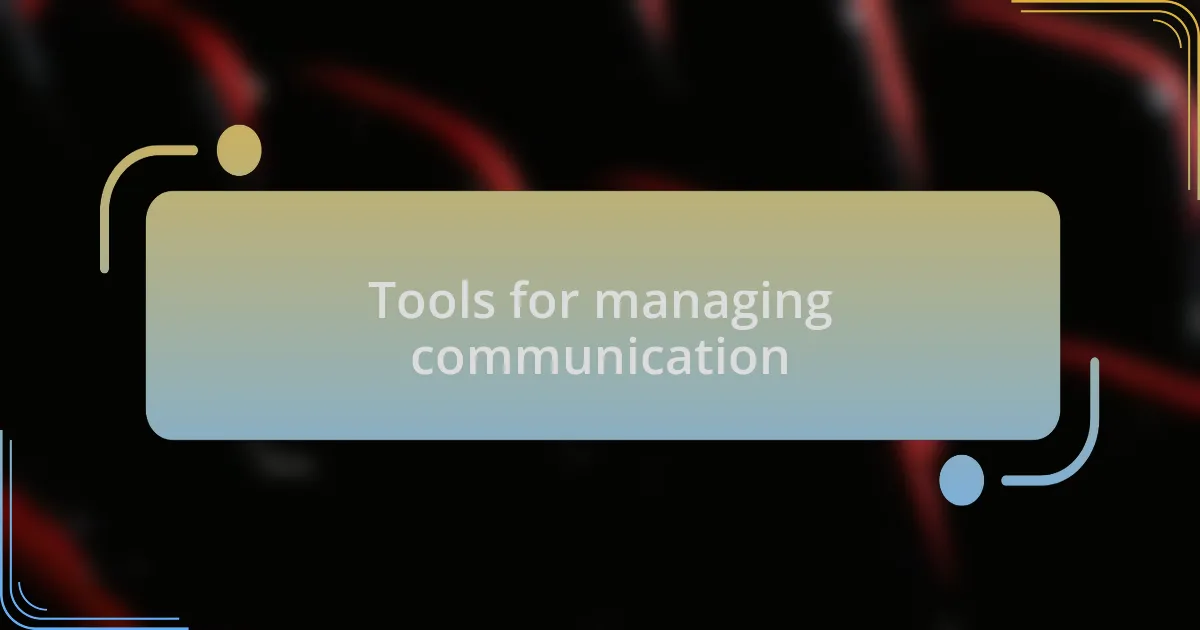
Tools for managing communication
When it comes to managing communication on set, I’ve found that tools like Slack and Trello are invaluable. These platforms streamline conversations, allowing for organized channels dedicated to specific topics. I remember a project where Trello helped us track our to-do lists in real-time, which really minimized the back-and-forth email chains that could clutter our already busy days.
I also can’t stress the importance of walkie-talkies during shoots. One time, we were filming a pivotal scene in a large outdoor location, and the distance between crew members caused some hiccups. A quick message over the walkie helped clarify instructions and maintain momentum, which ultimately saved us precious filming time. It’s fascinating how a simple tool can cut through chaos, don’t you think?
Additionally, I’ve discovered that holding regular video conferences can be a game-changer, especially when the crew is working remotely. During pre-production for a recent film, we set up weekly virtual meetings, fostering not just accountability, but a real sense of connection. Seeing everyone’s faces—even on a screen—added a layer of camaraderie that made it feel like we were all in the same room, collaborating towards a shared vision. Isn’t it incredible how technology can bridge distances and enhance teamwork?
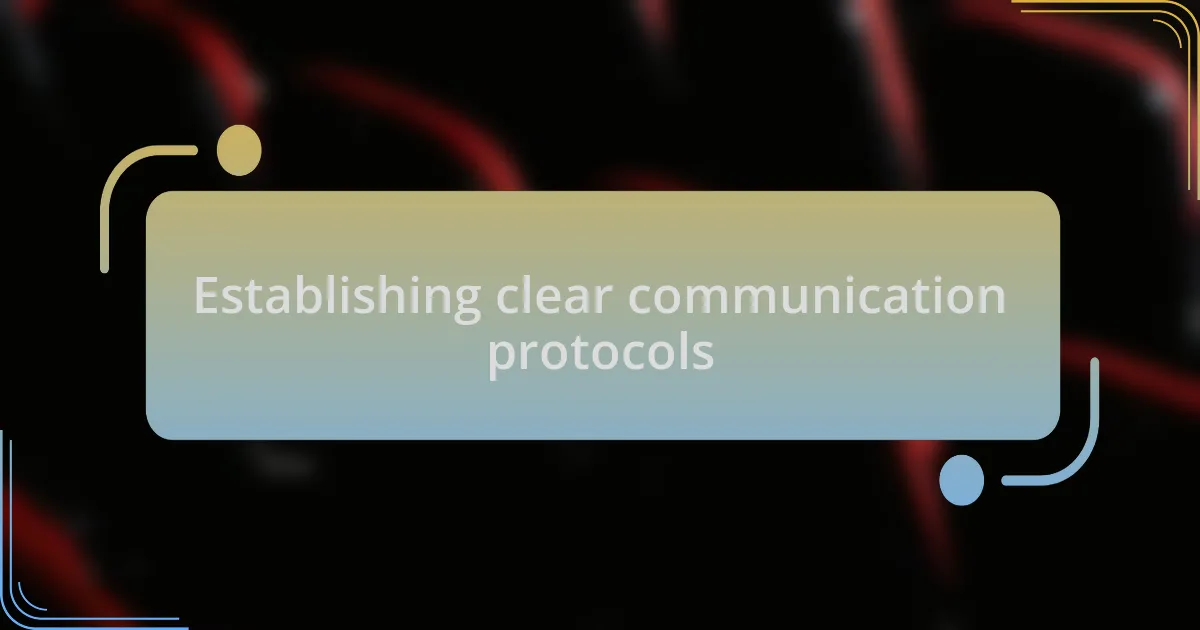
Establishing clear communication protocols
Establishing clear communication protocols is vital to any production. I remember a time when we kicked off a project with an all-hands meeting to lay down our communication expectations. We outlined who to contact for specific issues, which significantly reduced confusion on set. It was refreshing to see how much smoother our workflow became once everyone understood their point of contact.
One specific protocol we implemented involved daily check-ins, which I found incredibly beneficial. Just a quick 10-minute huddle each morning allowed us to air concerns, share updates, and align on our daily goals. The energy in the room shifted; suddenly, each crew member felt like they had a stake in the day’s successes. Isn’t it amazing how a little structure can transform a chaotic environment into a focused team effort?
Lastly, I advocate for clear documentation of all communication protocols. I personally draft a communication guidelines document that is accessible to everyone on the team. This transparency ensures that no one is left in the dark and fosters a culture of accountability. Reflecting on my experiences, I often think about how clarity empowers teams to tackle challenges more effectively. Do you see how establishing these boundaries can cultivate a more productive atmosphere?
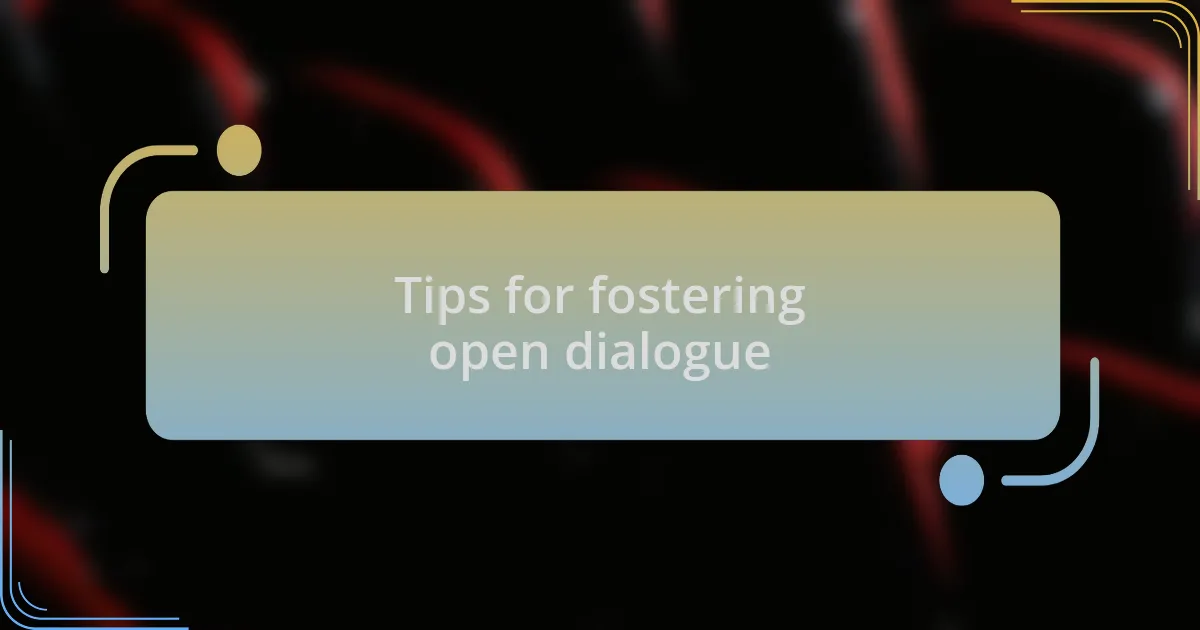
Tips for fostering open dialogue
Creating an environment where team members feel safe to voice their thoughts is essential. I remember during a particularly challenging shoot, I invited feedback after each day, and the responses were enlightening. Some crew members hesitated at first, but once they realized that their input was valued, we unlocked a treasure trove of ideas that improved our workflow and boosted morale. How often do we overlook the potential of our team simply because we haven’t asked for their perspectives?
Encouraging informal interactions can also break down barriers. One time, I organized a casual lunch for the crew, away from the usual frenetic pace of production. We laughed, shared stories, and, surprisingly, some meaningful feedback surfaced about the project. It reinforced my belief that fostering open dialogue often requires stepping outside traditional structures. Have you ever noticed how relaxed settings can lead to deeper conversations?
Lastly, active listening plays a pivotal role in fostering open dialogue. I strive to make it clear that I’m genuinely interested in what my team has to say. I often summarize their points and ask follow-up questions, which not only shows that I’m listening but also encourages them to elaborate further. Isn’t it refreshing when you feel truly heard? This practice has transformed my relationships with crew members, building trust that reverberates throughout the entire production.
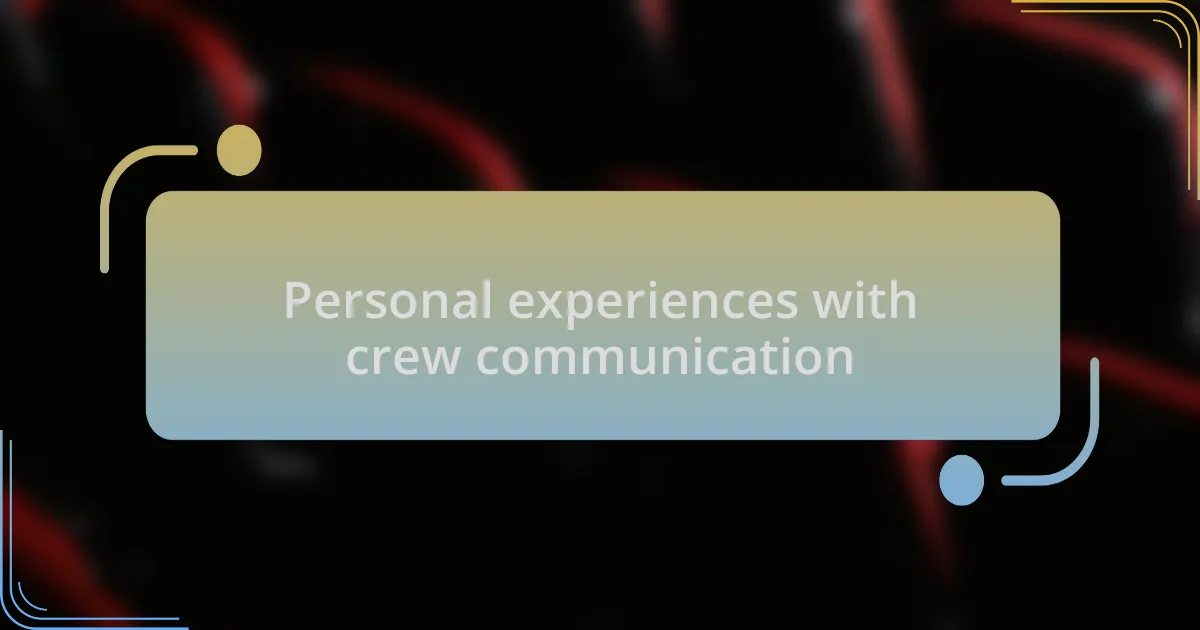
Personal experiences with crew communication
Communication with the crew has often shaped the way I approach production. During a late night shoot on a tight schedule, I discovered the power of conveying urgency without dismissing others’ concerns. I made it a point to acknowledge each crew member’s stress while clearly outlining our goals. This balance not only kept us on track but created a sense of camaraderie that made the long hours feel a bit lighter.
I recall a moment when a sound technician hesitated to voice his frustrations about challenging weather conditions affecting the equipment. After noticing his discomfort, I decided to address it openly in our morning briefing. The result? Other crew members shared their insights as well—transforming a single complaint into a group discussion that led to practical solutions. How often do we shy away from difficult topics, missing opportunities for collaboration?
On another occasion, a miscommunication about scheduling led to a cascade of confusion on set. Initially, it felt overwhelming. However, I chose to share the mistakes with the team openly, fostering a culture where errors could be discussed rather than hidden. The release of tension was palpable, and it instilled a sense of resilience; I learned that sometimes vulnerability invites accountability and strengthens our collective effort. Isn’t it fascinating how openly addressing issues can create an environment where everyone feels empowered?
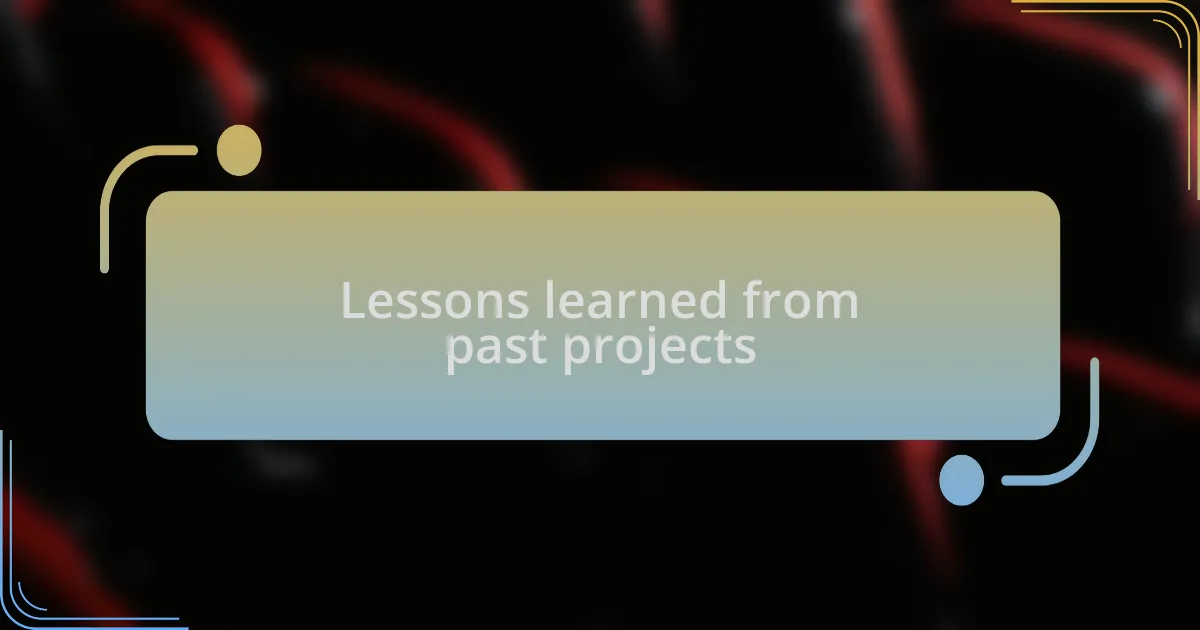
Lessons learned from past projects
I learned an invaluable lesson about the significance of clarity during a project where various departments had different interpretations of our goals. One day, during a particularly chaotic filming session, I took a step back and called a team huddle. By revisiting the core project objectives, I noticed a palpable shift in the team’s focus and energy. Reflecting on this experience, I’m convinced that when everyone understands their role, it fosters accountability and enthusiasm. Have you ever felt lost because you weren’t quite sure how your work fit into the bigger picture?
Another project emphasized the importance of regular check-ins. One morning, while sipping coffee with the crew, I introduced a quick 15-minute session to gauge how everyone was feeling about their tasks. It surprised me how such a simple gesture cultivated an open dialogue. Crew members started sharing their progress, as well as obstacles, leading to collective problem-solving. I realized that nurturing a culture of communication not only resolves issues but also builds stronger relationships among team members. Isn’t it amazing how a little chat can transform the work atmosphere?
During a film set plagued by technical difficulties, I noticed that fear of judgment hindered team members from voicing their concerns. I took a moment to share my own mishaps from earlier projects, which helped break the ice. When I shared those experiences, it invited others to join in and share their struggles too, creating unity instead of isolation. This taught me that vulnerability can cultivate trust within the team. Have you ever wondered how sharing imperfections might strengthen your crew’s collaboration? Sometimes, it takes just one person to lead the way toward a more supportive environment.